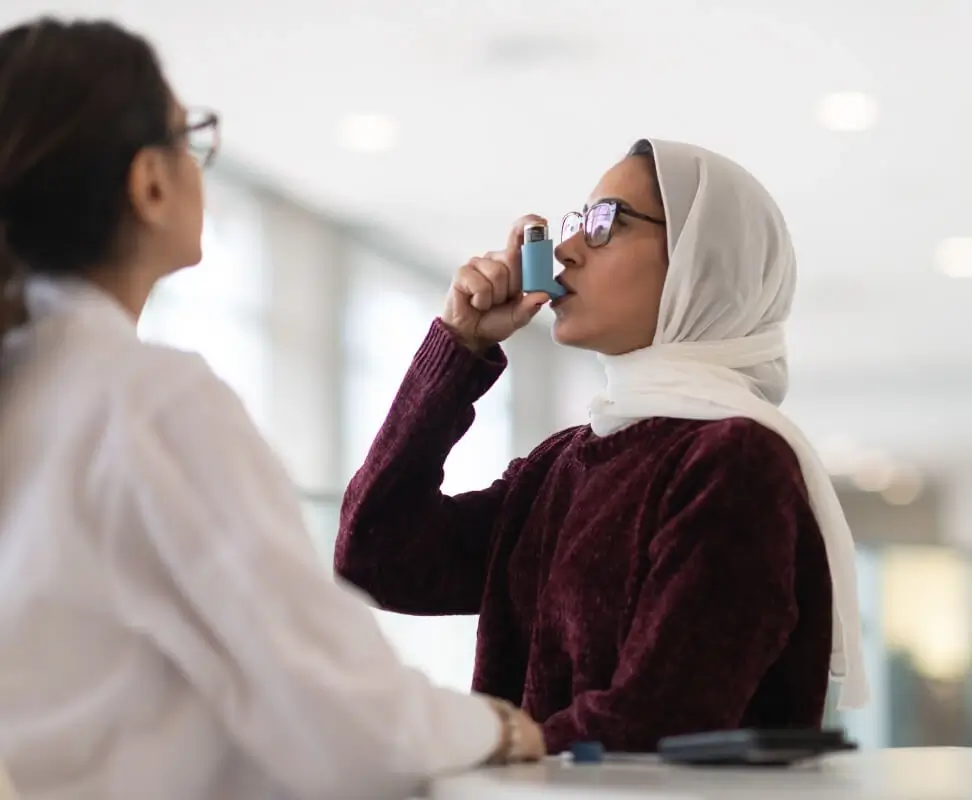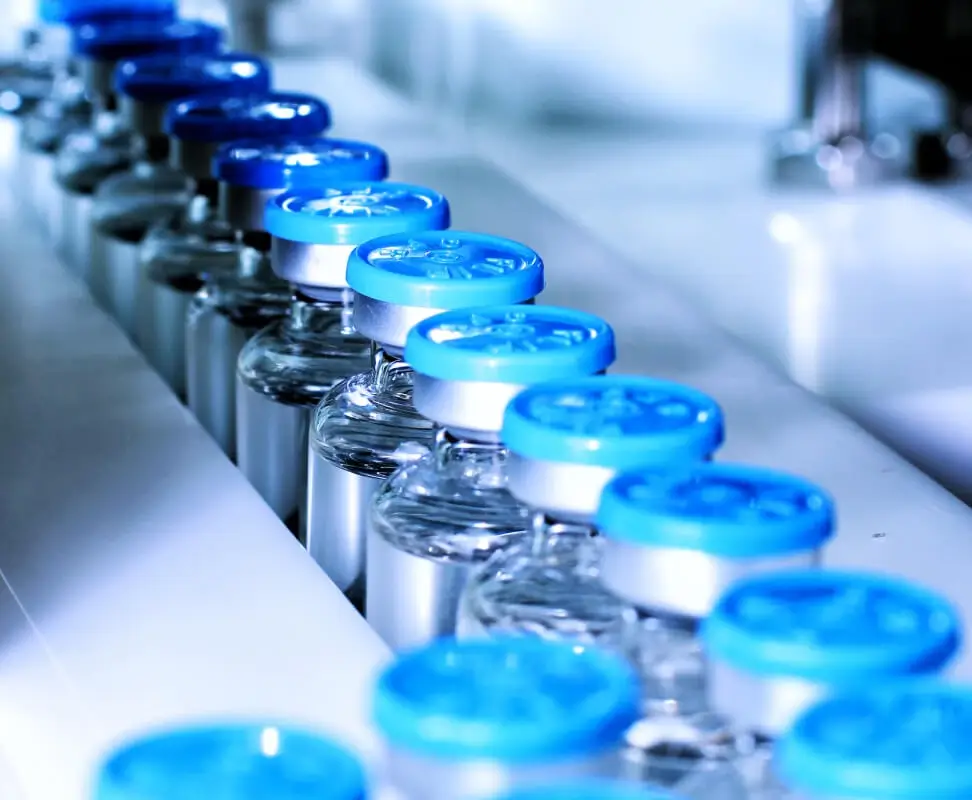
Extractables and Leachables Testing
Infinity Laboratories provides a one-stop solution for extractables and leachables (E&L) studies to identify potentially harmful contaminants within your pharmaceutical drug product or medical device. Without proper extractable and leachable evaluation, unknown chemicals and compounds can present serious risks for pharmaceutical and medical device product patients.
Infinity Laboratories provides a one-stop solution for extractables and leachables (E&L) studies to identify potentially harmful contaminants within your pharmaceutical drug product or medical device. Without proper extractable and leachable evaluation, unknown chemicals and compounds can present serious risks for pharmaceutical and medical device product patients.
What Are Extractables and Leachables?
Pharmaceutical and medical device products must be designed and rigorously tested to prevent unwanted chemicals from being released while in container-closure systems.
Extractables and leachables are common impurities within elastomeric and plastic materials that can contaminate a packaged pharmaceutical drug product or medical device and must be accounted for to ensure safety and efficacy for the patient.
While similar, they have distinct characteristics requiring specific laboratory tests and methods to identify.

Extractables are compounds which can be pulled out of a container or product when exposed to extreme solvents and/or conditions such as elevated temperatures.
Leachables originate in container closures and seep into a finished product and/or patient over time. Leachables can affect products under standard conditions, but can be commonly traced to monomers, polymer additives, or release agents in the manufacturing process.
Identifying Risk Through Extractables and Leachables Testing
Extractables and leachables can pose significant risks to patients and must be identified and mitigated through E&L studies. Infinity provides the highest quality assays, all of which leverage standards and guidelines set by compendial organizations, including the FDA, ISO, ICH, and the US, European, and Japanese pharmacopeias.

Extractables and leachables represent contaminates within a pharmaceutical drug product or medical device. E&L studies identify the presence or absence of impurities by investigating undesirable outcomes due to:
- Interaction between a container closure and drug product
- Impact of solvent(s) used during manufacturing processes
- A drug delivery system and drug product interaction
- An implantable medical device interaction with the human body
- Interactions among materials in the same medical device
- Impact of elevated temperatures and extraction solvents
Extractables and Leachables Testing Services
Infinity provides comprehensive E&L testing services to meet quality and safety standards established for pharmaceutical and Class II and Class III medical devices.
Extractables & Leachables Studies for Pharmaceuticals
Elemental Impurities
Elemental Impurities
Standard: USP <232>, USP <233>
Methods and Limits to determine that the presence and concentration of elemental impurities within a product fall within harmonized guidelines.
Impurity Identification
Impurity Identification
Standard: USP <476>, USP <1086>
Tests for impurities and acceptable impurity limits in medical devices or pharmaceutical products.
Material Compatibility
Material Compatibility
Standard: Product dependent
Seeks to understand whether or not the different component materials in a medical device, including a drug component, can negatively interact with each other and impact the performance or safety of the overall device.
Plastic Components & Systems
Plastic Components & Systems
Standard: USP <665>, USP <1665>
Tests to characterize and qualify plastic components for extractables and process equipment-related leachables (PERLs).
Plastic Packaging Systems & Materials of Construction
Plastic Packaging Systems & Materials of Construction
Standard: USP <661>
Identification, characterization, and physiochemical testing of high-density polyethylene (HDPE), low-density polyethylene (LDPE), polypropylene (PP), polyethylene terephthalate (PET), polyethylene terephthalate G (PETG), and other polymers.
Plastic Materials of Construction and Plastic Packaging Systems for Pharmaceutical Use
Plastic Materials of Construction and Plastic Packaging Systems for Pharmaceutical Use
Standard: USP <661.1> and USP <661.2>
Extending USP <661>, these tests comply with more rigorous standards that demonstrate that a polymer raw material within primary packaging that comes in contact with the pharmaceutical product and any relevant secondary packaging is well-characterized and suitable for its intended use.
Single-Use Bioprocessing Systems Extractables & Leachables
Single-Use Bioprocessing Systems Extractables & Leachables
Standard: USP <665>, USP <1665>, BioPhorum Operations Group (BPOG) Protocol
BPOG protocol outlines the procedures needed to meet expectations outlined in pharmacopeia extractables and leachables standards. Generated data allows developments to compare product characterization data from multiple single-use system vendors.
Extractables & Leachables Studies for Medical Devices
Bioabsorbable Polymers
Bioabsorbable Polymers
Standard: ASTM F1635
Characterization of the properties and degradation profiles of bioabsorbable medical-grade polymers, components, and devices.
Chemical Characterization
Chemical Characterization
Standard: ISO 10993
ISO 10993 chemical characterization studies are conducted on medical devices to provide ISO 10993-compliant biocompatibility data for regulatory filings. Studies are constructed around ISO 10993-12 (sample preparation) and ISO 10993-18 (chemical characterization) standards.
Impurity Identification
Impurity Identification
Standard: USP <1086>, USP <476>
Impurity identification and impurity characterization under FDA and ICH guidelines. Available techniques include chromatography, spectroscopy, and microscopy.
Material Compatibility
Material Compatibility
Standard: ISO 10993
Seeks to understand whether or not the different component materials in a medical device, including a drug component, can negatively interact with each other and impact the performance or safety of the overall device.
Medical Device Extractables & Leachables
Medical Device Extractables & Leachables
Standard: ISO 10993 Chemical Characterization Testing
Set of methods to characterize complex chemical interactions in medical device materials (polymers, metals, ceramics, and composites) to characterize extractables and leachables properly.

